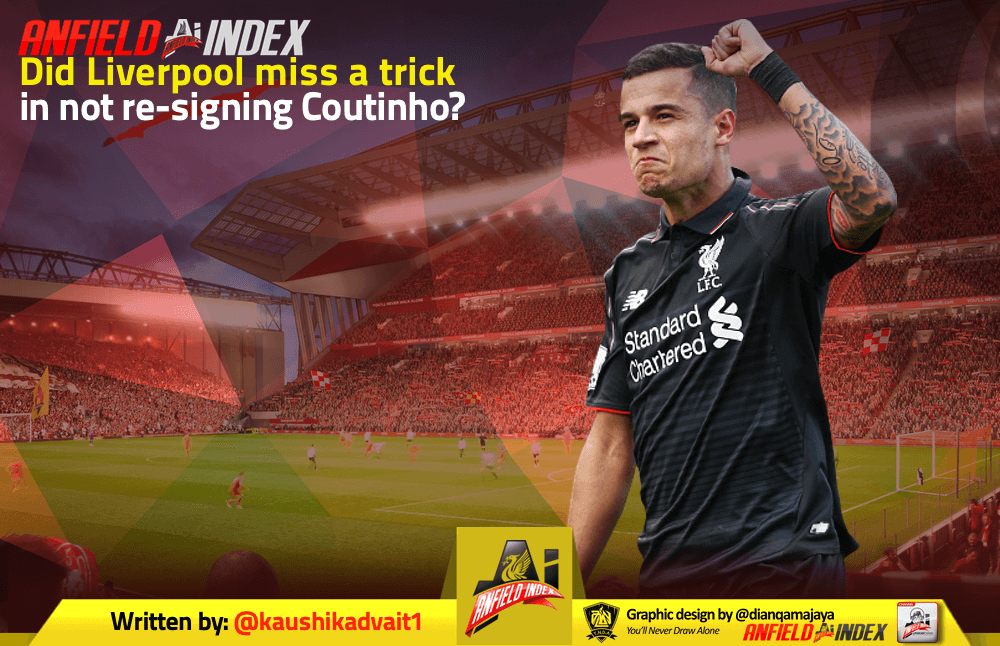Liverpool fans this summer were divided in their desire to see Phillipe Coutinho back at the club. Some argued that it would bring welcome quality and depth to Liverpool’s attack, whilst others argued that the club had moved on from the Brazilian and that his manner of departure was unforgivable. Emotions aside, though, and I see a clear trick missed by Liverpool in not bringing him back.
Minutes played
The workload of Liverpool’s renowned front three has been a huge topic of discussion, and the underlying numbers back up the view that this is a cause for concern.
| Player | Minutes Played (2018/19) | Minutes Played (2017/18) | % difference |
| Mohammed Salah | 3274 | 2954 | 9.77% |
| Sadio Mane | 3100 | 2230 | 28.06% |
| Roberto Firmino | 2631 | 2814 | -6.96% |
Source: Understat
Both Salah and Mane saw their minutes played increase quite significantly in the 2018/19 season as compared to the one before, and it is likely the same would have been true for Firmino, had he not struggled with injuries towards the end of the season. This points to a greater reliance on the front three given the absence of someone like Coutinho, who shared some of the burden on them during his time at the club.
A closer inspection provides some more colour. Coutinho’s last game for the club was a 2-1 victory over Leicester on the 30th of December, after which Liverpool had played a total of 21 games in the league. The table below illustrates the difference in minutes played over that time frame, season-on-season.
| Player | Minutes Played (2018/19) | Minutes Played (2017/18) | % difference |
| Mohammed Salah | 1765 | 1621 | 8.16% |
| Roberto Firmino | 1622 | 1530 | 5.67% |
| Sadio Mane | 1587 | 937 | 40.96% |
| Phillipe Coutinho | – | 1132 | – |
Source: Understat
While all the front men saw their minutes played increase, Mane’s was the most significant, partly because he and Coutinho both tended to play wide-left while the Brazilian was at the club.
Given that there exists 4950 minutes of football for Liverpool if they want to go as far in the Champions League this season as they did in the last two (38 Premier League games and 13 Champions League games, at 90 minutes each), and that each of the front three hit their physical limits as per Anfield Index Pro’s UnderPressure podcast, Klopp would have to compensate by using his other attackers.
Drop-off in quality
The issue is that clearly, Klopp doesn’t trust them as much, and the underlying numbers reflect why.
| Player | Min | G | A | xG | xA | xGChain | xGBuildup | xG90 | xA90 | xG90 + xA90 | xGChain90 | xGBuildup90 |
| Mohamed Salah | 3274 | 22 | 8 | 21.79 | 10.47 | 31.78 | 7.87 | 0.60 | 0.29 | 0.89 | 0.87 | 0.22 |
| Sadio Mané | 3100 | 22 | 1 | 16.76 | 5.12 | 28.40 | 8.49 | 0.49 | 0.15 | 0.64 | 0.82 | 0.25 |
| Roberto Firmino | 2631 | 12 | 6 | 13.74 | 6.34 | 24.35 | 9.15 | 0.47 | 0.22 | 0.69 | 0.83 | 0.31 |
| Xherdan Shaqiri | 1048 | 6 | 3 | 4.06 | 1.89 | 7.92 | 3.42 | 0.35 | 0.16 | 0.51 | 0.68 | 0.29 |
| Divock Origi | 357 | 3 | 1 | 2.24 | 0.19 | 1.41 | 0.70 | 0.57 | 0.05 | 0.61 | 0.36 | 0.18 |
Source: Understat
For context, expected goals (xG) measures the quality of a shot based on several variables such as assist type, shot angle and distance from goal, whether it was a headed shot and whether it was defined as a big chance. [Opta] The player making the pass to the shooter sees his/her expected assist (xA) number increase correspondingly. xGChain measures the total xG of every possession the player is involved in, while xGBuildup measures the same thing but discounts key passes and shots entirely. [Understat]
Given that the minutes played for each individual wasn’t the same, each metric has a corresponding one that accounts for the contribution over 90 minutes of football (xG90, xA90, xGChain90, xGBuildup90).
We can see the superiority of the front three here: each of them makes more goal-scoring contributions to the team when spread over 90 minutes. For context, Shaqiri’s ability to ‘pick a pass’ was lauded, but his xA90 was surpassed easily by Salah and Firmino. Further, this is despite the fact that Shaqiri and Origi’s numbers don’t exactly make for fair comparisons given the vast differences in minutes played. Another contributing factor to Shaqiri’s numbers is the fact that he often found himself playing under a different system (4-2-3-1 as opposed to the usual 4-3-3) and as Klopp has mentioned, the reason Liverpool didn’t continue with that was due to the defensive shape not being as solid.
| Player | Min | G | A | xG | xA | xGChain | xGBuildup | xG90 | xA90 | xG90 + xA90 | xGChain90 | xGBuildup90 |
| Mohamed Salah | 1621 | 17 | 5 | 14.68 | 4.59 | 20.78 | 3.65 | 0.82 | 0.25 | 1.07 | 1.15 | 0.20 |
| Roberto Firmino | 1530 | 9 | 4 | 6.31 | 5.05 | 14.95 | 6.11 | 0.37 | 0.30 | 0.67 | 0.88 | 0.36 |
| Philippe Coutinho | 1132 | 7 | 6 | 3.64 | 4.95 | 9.05 | 3.71 | 0.29 | 0.39 | 0.68 | 0.72 | 0.29 |
| Sadio Mané | 937 | 4 | 4 | 4.54 | 2.97 | 8.73 | 2.73 | 0.44 | 0.28 | 0.72 | 0.84 | 0.26 |
| Daniel Sturridge | 428 | 2 | 1 | 2.54 | 0.84 | 3.41 | 0.39 | 0.53 | 0.18 | 0.71 | 0.72 | 0.08 |
Source: Understat
A look at the numbers in the 2017/18 season (shown above) illustrates how close to (and in some cases, better) Coutinho was as compared to the front three, over a minute’s workload that was more evenly spread. Coutinho’s xA90 of 0.39 was comfortably the highest of Liverpool’s attacker, showcasing just how vital he was in terms of goal contributions. Games such as Everton (H), Everton (A), Manchester United (A) and West Ham (A) in 2018/19 showed just how much the Reds sometimes missed that creative spark.
A common misconception the data disproves is that Liverpool’s play ‘always went through Coutinho’. A look at the xGBuildup90 above – which as mentioned earlier, looks at the expected goals of each possession the player is involved in without key passes and shots – shows that it was Roberto Firmino who was actually Liverpool’s most involved player in buildup, with his 0.36 trumping Coutinho’s 0.29. In fact, Coutinho was closer to third-placed Mane (0.26) than he was to Firmino.
Better without Coutinho?
In fact, these set of numbers disprove another common misconception too: that the current front three’s output was better without Coutinho in the side, or in the 2018/19 season as compared to the 2017/18 season.
The table below compares the per-90 stats for each of the front three across the 5 metrics shown previously season-over-season (numbers in brackets show a decrease from 2017/18 to 2018/19).
| Player | xG90 | xA90 | xG90 + xA90 | xGChain90 | xGBuildup90 |
| Sadio Mané | 0.05 | (0.13) | (0.08) | (0.02) | (0.01) |
| Mohamed Salah | (0.22) | 0.04 | (0.18) | (0.28) | 0.02 |
| Roberto Firmino | 0.10 | (0.08) | 0.02 | (0.05) | (0.05) |
Source: Understat
We can thus see that the numbers weren’t too different when comparing the two seasons, and in most cases actually worse. Thus, there is no factual argument that shows that Liverpool’s attack was more potent or less predictable without Coutinho.
As for the defensive improvement, it is lazy analysis to attribute that to his departure. Virgil van Dijk and Alisson’s leadership and individual quality were the reasons for that, not a drastic shift in system or shape.
Options in attack
Had Coutinho’s loan move to Liverpool materialized, it is difficult to believe he would have slotted into the midfield three, given the number of options Liverpool have their already. Instead, it seems more plausible that Klopp would have rotated his newfound front four across the three available positions. The figures below illustrate how that might have occurred, given the adaptability and ability of each player.


The benefits of this would be obvious: spread the burden across the players to reduce each player’s game time thus reducing injury risk, all while preventing a significant drop-off in quality.
Peer comparison
Liverpool’s competitors are Manchester City, and given their quality and variety of options, are always going to be a point of comparison. A look at their numbers shows exactly why.
| Player | Min | G | A | xG | xA | xGChain | xGBuildup | xG90 | xA90 | xG90 + xA90 | xGChain90 | xGBuildup90 |
| Bernardo Silva | 2851 | 7 | 7 | 8.2 | 8.63 | 29.93 | 16.89 | 0.26 | 0.27 | 0.53 | 0.94 | 0.53 |
| Raheem Sterling | 2788 | 17 | 10 | 15.91 | 10.79 | 33.02 | 12.63 | 0.51 | 0.35 | 0.86 | 1.07 | 0.41 |
| Sergio Agüero | 2515 | 21 | 8 | 19.95 | 5.23 | 28.7 | 8.10 | 0.71 | 0.19 | 0.90 | 1.03 | 0.29 |
| Leroy Sané | 1866 | 10 | 10 | 6.98 | 8.1 | 21.35 | 10.56 | 0.34 | 0.39 | 0.73 | 1.03 | 0.51 |
| Riyad Mahrez | 1333 | 7 | 4 | 6.62 | 5.01 | 14.37 | 6.83 | 0.45 | 0.34 | 0.78 | 0.97 | 0.46 |
| Gabriel Jesus | 993 | 7 | 3 | 12.62 | 2.65 | 16.59 | 4.99 | 1.14 | 0.24 | 1.38 | 1.5 | 0.45 |
Source: Understat
As one can clearly see, City’s players play fewer minutes than Liverpool’s, down not to the number, but rather, the quality of options at Pep’s disposal. Each of their six most used attackers put up numbers almost at par with the other’s, and this ensured a more even distribution of minutes.
A comparison of the minutes played (shown below) highlights the difference in minutes played between City’s three most used attackers and Liverpool’s. Each of the Reds’ trio played more than their counterpart, which would highlight a greater injury risk.
| Liverpool Player | Minutes Played 2018/19 | % Difference | Minutes Played 2018/19 | City Player |
| Mohammed Salah | 3274 | 12.92% | 2851 | Bernardo Silva |
| Sadio Mane | 3100 | 10.06% | 2788 | Raheem Sterling |
| Roberto Firmino | 2631 | 4.41% | 2515 | Sergio Aguero |
Further, as mentioned by Simon Brundish in the UnderPressure podcast, City’s players benefitted from a greater pre-season, whilst Liverpool’s didn’t, a reversal from the 2018/19 season.
Liverpool would have been wise to follow suit, and while they might – by some stroke of luck – see their front three power through this season, they might yet live to regret not bringing Coutinho back.




